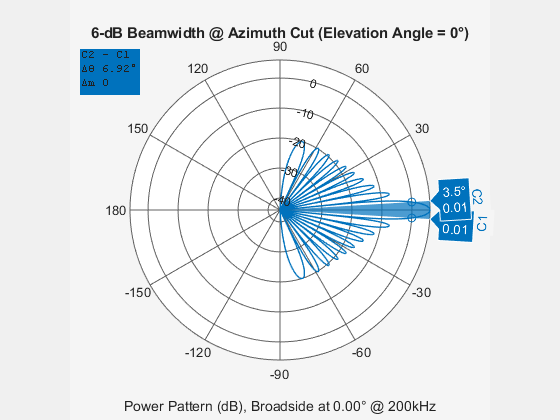beamwidth
Description
beamwidth(
plots the 2-D power pattern (in dB) of the array,freq)array for all azimuth angles
at a fixed elevation angle of zero degrees. The plot displays the half-power beamwidth (in
degrees) at the frequency specified in freq (in Hz) and the angles (in
degrees) in azimuth at which the magnitude of the power pattern decreases by 3 dB from the
peak of the main beam.
beamwidth(
plots the beamwidth with the specified parameter array,freq,Name=Value)Name set to the
specified Value. You can specify additional name-value pair arguments
in any order as (Name1=Value1,...,NameN=ValueN).
Example: beamwidth(array=3e8,Cut="Elevation")
Examples
Input Arguments
Name-Value Arguments
Output Arguments
Version History
Introduced in R2023b
